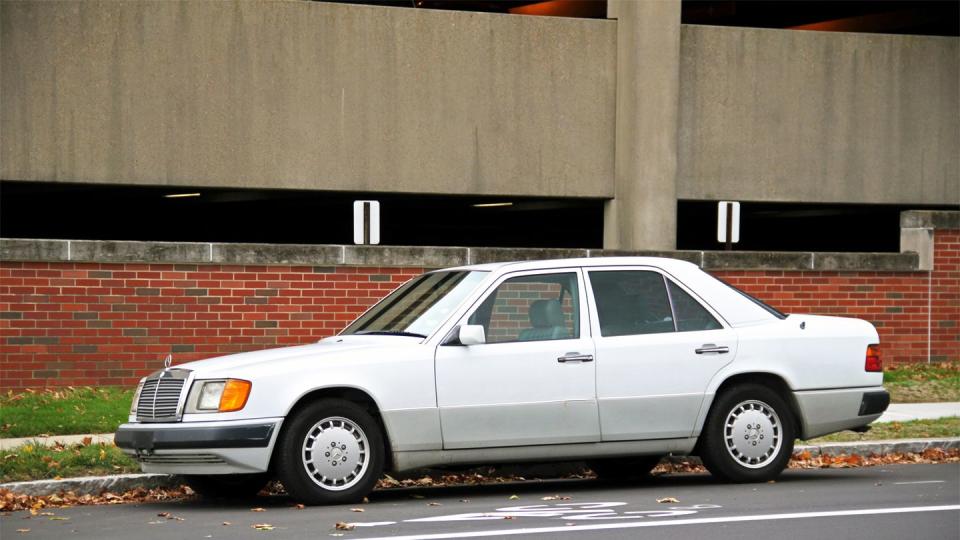This Mercedes-Benz 300D 2.5 Turbo Is Still Going Strong

Just like its immediate predecessor, the Mercedes-Benz W124 has now become one of those cars that defies the pressures of time, and could still be readily found as a daily driver today. It's also a car that gives off the unmistakable smell of old money.
This one, however, gives off one other smell: Diesel.
The W124 arrived on sale at a time when the Malaise-fighting diesel era was still fresh, if not quite a pressing concern when choosing how to fill up one's car. Big V8s were back in force in the second Reagan administration, but European automakers preferred to hedge their bets.
That's how the W124 joined its nearly indestructible W123 predecessor as a vehicle you could identify by sound alone a couple of blocks out. It was also one of the last Benzes created to a money-no-object standard. First, they engineered how they wanted it, as the story goes, and only then when it was done would they figure out how much it would cost.
The W124 arrived on the scene in 1984—something a little hard to process because you still see it in traffic on a daily basis. Throughout its model run quite a variety of engines came and went, with the wide engine bay accepting everything from an inline-four to a V8.
The base diesel model, at least in Europe, was the 200D with just 71 hp on tap—as usual deemed too modest for North America.
The model sold as the 300D stateside used a 2.5-liter turbodiesel inline-five, with 121 hp and 165 lb-ft of torque. Paired with a four-speed automatic, it was a comfy highway cruiser, and a thrifty one as well, often offering around 40 mpg on the highway if you didn't have the A/C cranked all the way up. More importantly, it offered plenty of power for errands around town, with fill-ups required once a month or so even with a busy schedule.
Why you'd want any other engine (besides the one in the Mercedes 500E) is beyond us.
The W124 also seemed to suffer a lot less from rust issues than its successor, the W210. But quite a few Benzes of the 1990s either had strange and extensive rust issues, or didn't have them at all. But the W210 had other issues as well.
One other long-lived model from that time—the Volvo 240—is now almost non-existent in diesel form, even though there are still plenty of 240s around. The diesel Volvo 740 is hard to find today, too. That's because neither of the Volvos was offered in similar volumes to the W124 diesel.
Today, the 300D is not the most common version of the W124 we see. The E320 of the early 1990s probably has that title for now, followed by the E420, simply because they were among the last ones sold in North America. In fact, it feels like only one in 20 W124s we encounter are diesels, and they tend to be older models.
Spotting this well-kept 300D reminded us just how right Mercedes got this particular model 40 years ago, allowing them to remain in everyday use well into the 21st century.

 Yahoo Autos
Yahoo Autos 